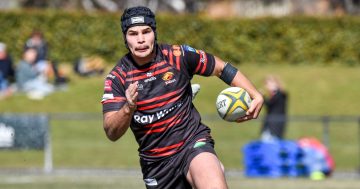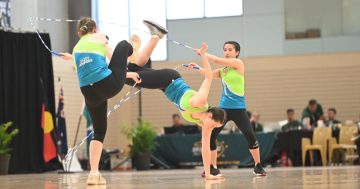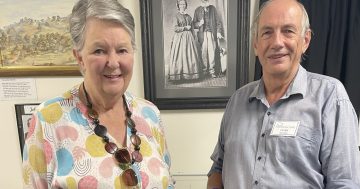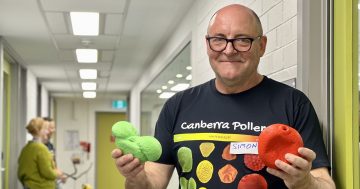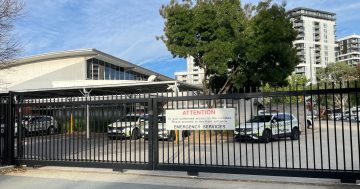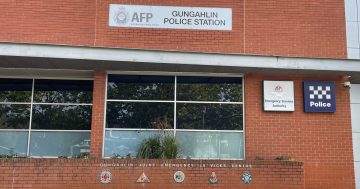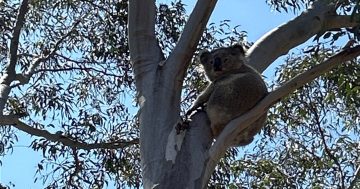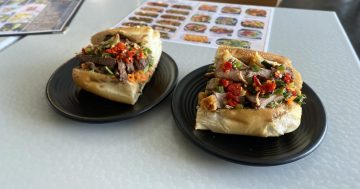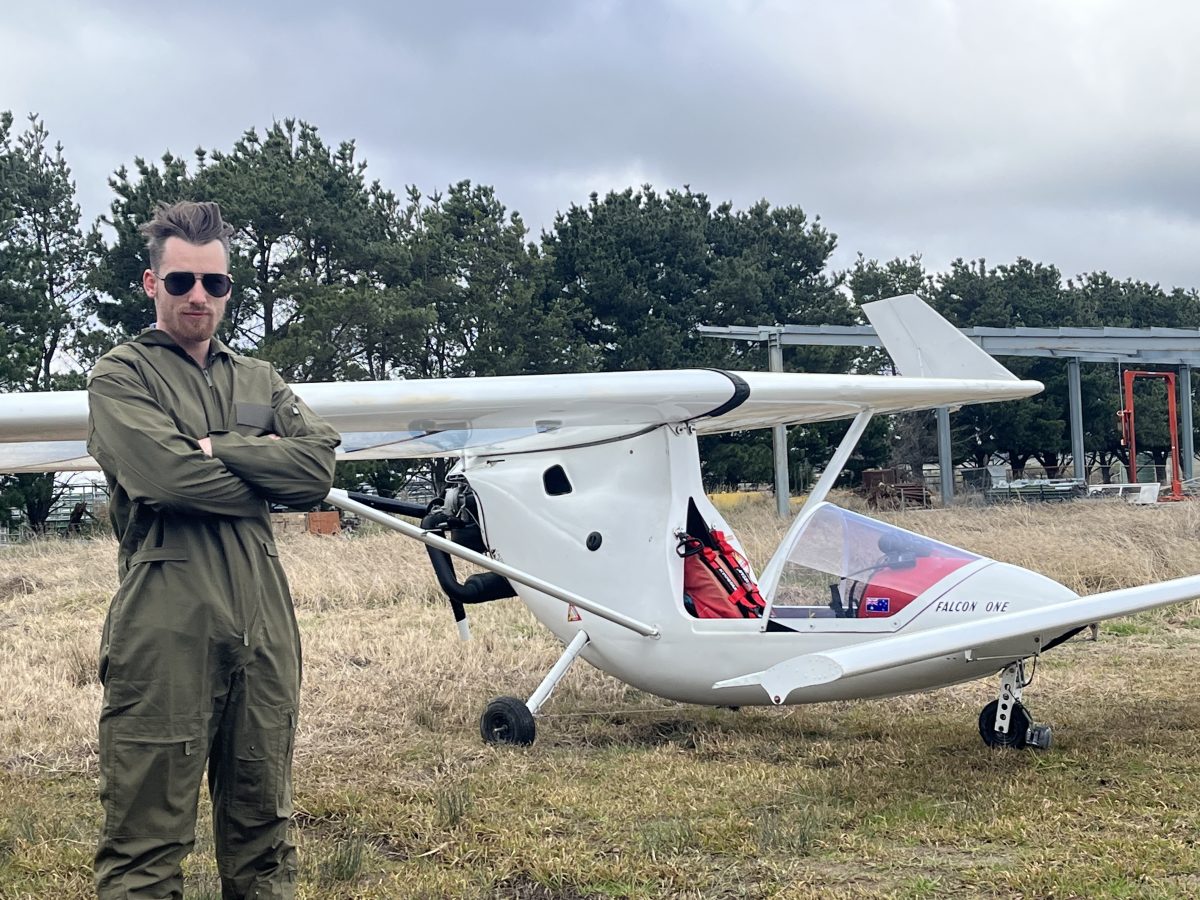
Kevan Brown ready for his first flight on board his ultralight aircraft. Photo: Kevan Brown.
Kevan Brown was on board a small seaplane, enjoying the majestic sights of New Zealand’s north island far below, when somewhere over Lake Taupo, the pilot effectively said: “Here, you have a go”.
“I’ve always been interested in planes,” he says.
“My dad works for NASA and Boeing, so I’ve seen a lot of the behind-the-scenes stuff over there.”
But there and then, 12-years-old and joystick in hand, he was well and truly hooked. And it explains why passers-by of his Taylor home over the past few months may have spotted parts of aircraft carefully laid out across the front lawn.
Now 25, he’s gearing up to become an ultralight aircraft manufacturer.
“Pretty much as soon as I got back from New Zealand, I thought: ‘I’m going to do this. I’m going to get into flight training’,” Kevan says.
By 17, he was flying solo using a rented two-seat plane from the Goulburn Flight Training Centre. But this was expensive, and if he were to accrue the 2000 hours of experience he’d need to get his dream job as an aircraft pilot with Qantas, he’d have to buy his own.
“I was paying somewhere around $250 an hour,” he says.
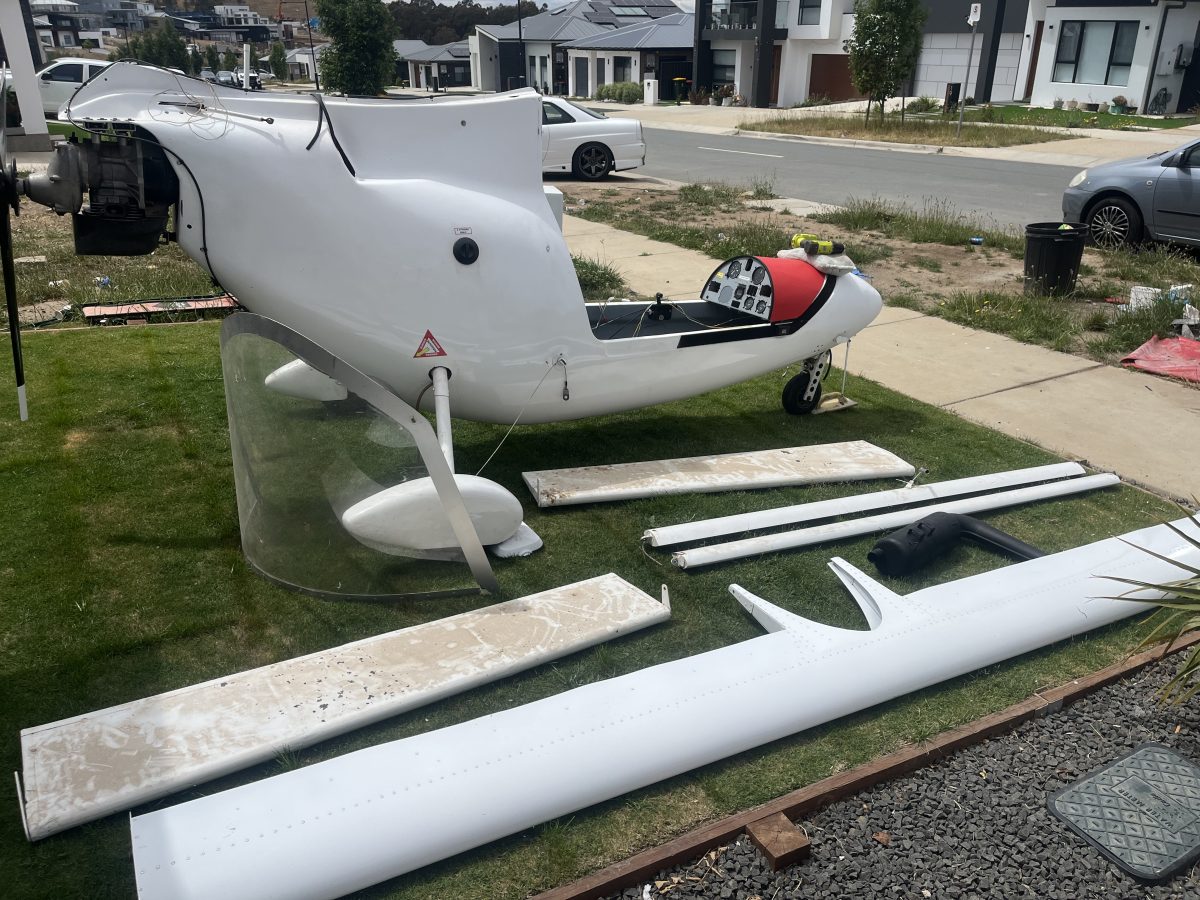
The ultralight aircraft in carefully laid-out pieces on the front lawn in Taylor. Photo: Kevan Brown.
The project didn’t exactly get off to a good start.
“We came across this good deal over in Parkes, about a three-hour drive west, and decided to go ahead with it,” he says.
“We went over to pick it up, but didn’t realise it had a wing span of 5.5 metres on either side, so we had to dissemble it first. The drive home was a disaster. We had to stop a few times to re-rig it and make sure everything was okay.”
The ultralight aircraft was designed by a now defunct company, American Aerolights, but another company has since bought the rights to reproduce it as a “no-licence kit” in the US.
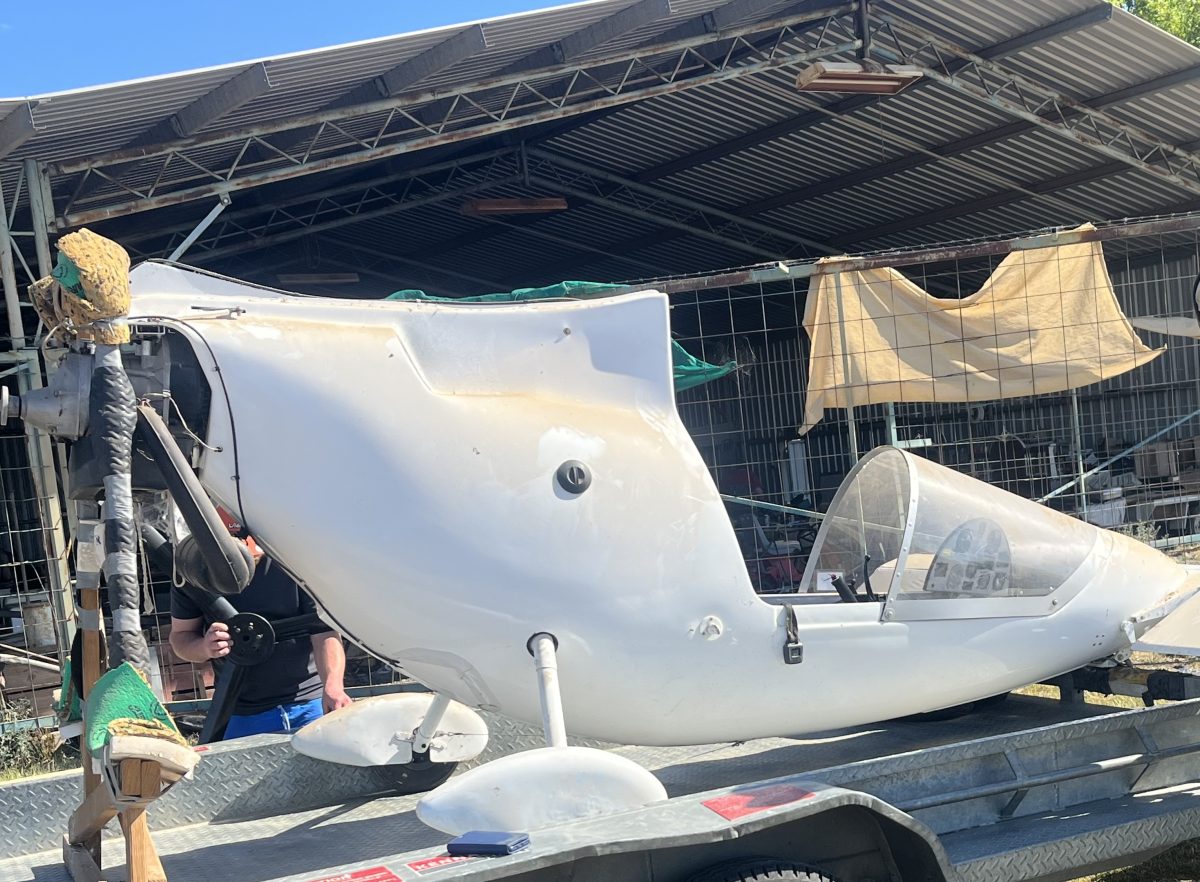
Loading the plane onto a trailer was the first challenge. Photo: Kevan Brown.
“So you buy the kit, and it’d come with instructions on how to build it and how to fly it,” Kevan explains.
“The perfect plane for a personal builder.”
Well, sort of. It’s still taken him and a mate four days a week over 11 months to get it working, or a combined total of 500 hours.
“For the first seven months, it was in my garage in Taylor – I moved everything out and it was literally the plane taking up the whole space.”
About two months ago, it was put on a truck again and taken to Goulburn Airport for the certification and testing processes. This includes getting it just off the ground along the runway to see how the controls respond. On Thursday (18 July), he took it up for its first circuit.
“It started quick, and I’m getting more confident with the engine,” he says. “I’m keen to take on a big flight.”
He estimates the plane costs him about $45 an hour – a big reduction from the $250 he was paying for the rented plane – but his initial ambition to become an airline pilot has waned in favour of becoming an ultralight aircraft manufacturer.
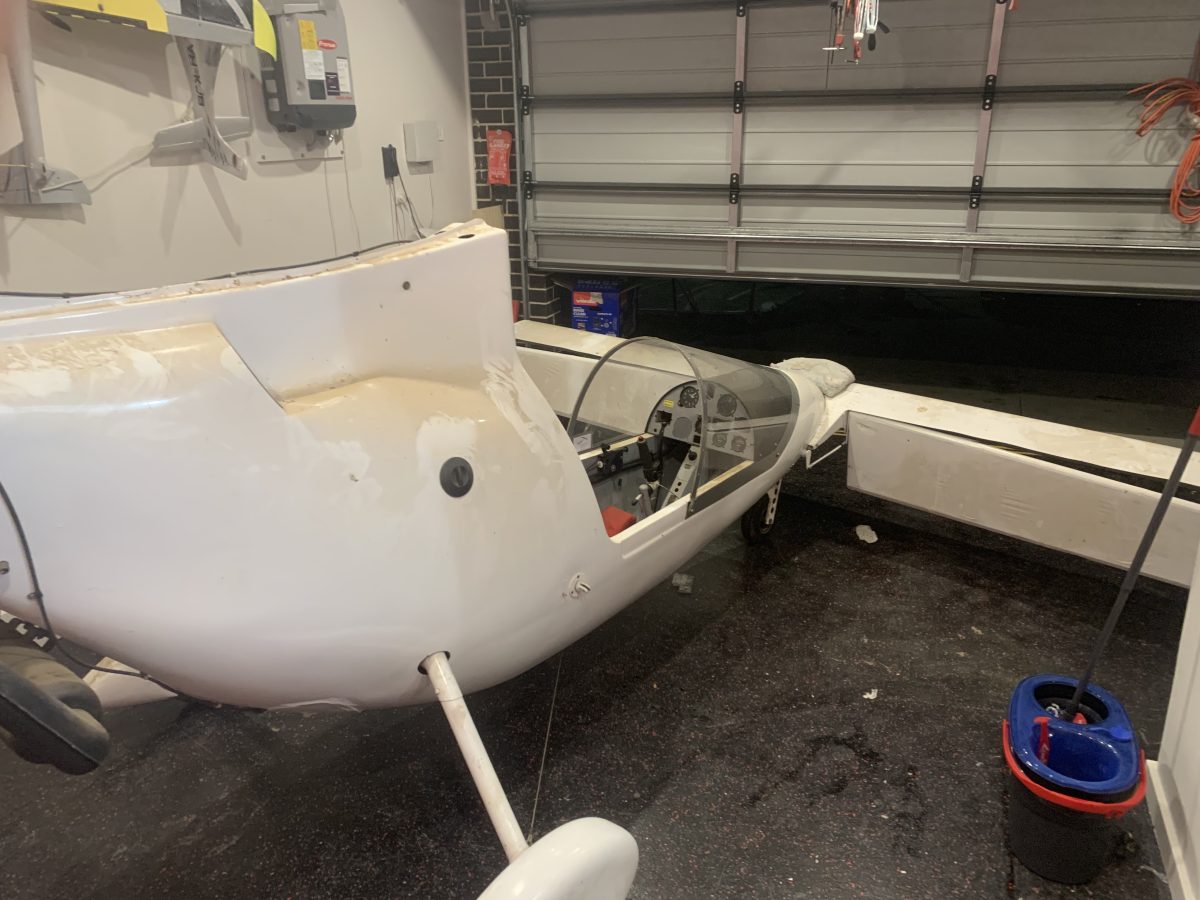
The plane took up most of Kevan’s garage. Photo: Kevan Brown.
He’s particularly interested in the potential of electric and hydrogen power.
“I did want to be an airline pilot, but I don’t think I want to pursue that now because I’ve found a lot of joy in the small ultralights,” he says.
It’s a fairly open industry, and Australian legislation allows for people like Kevan to “build my own design straight out of the garage and legally fly it as long as it’s been tested and certified”.
“And I think it should stay like that, because that allows people to be innovative and come up with new ways of doing flight.”
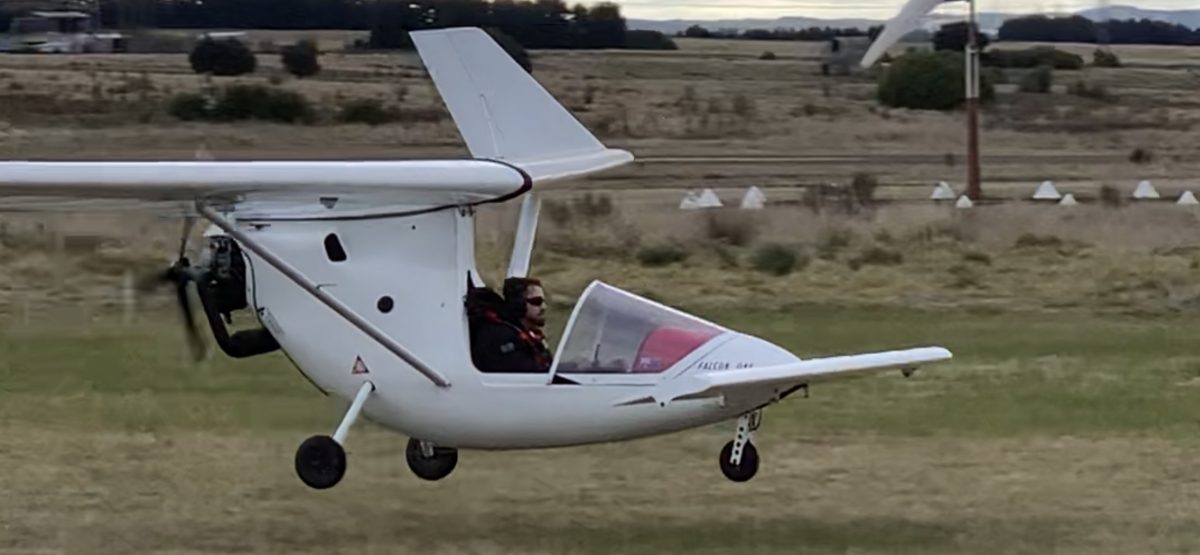
And it’s up and away. Photo: Kevan Brown.
Small aircraft powered by batteries or hydrogen fuel cells are certainly up and coming.
For instance, Sydney Seaplanes, the carrier set to be taking off from Lake Burley Griffin in the coming months, also has a stake in Dovetail Electric Aviation, and expects the first test flights of small battery planes early next year.
Kevan’s plans focus on the ultralight category.
“Ultralight aircraft are perfect for training purposes, but we don’t really have any new versions,” he says.
“So I’m interested in bringing this type of aircraft back with hydrogen or electric power.”
It seems Gungahlin may have just witnessed the origin story of a future Australian entrepreneur.
Original Article published by James Coleman on Riotact.



